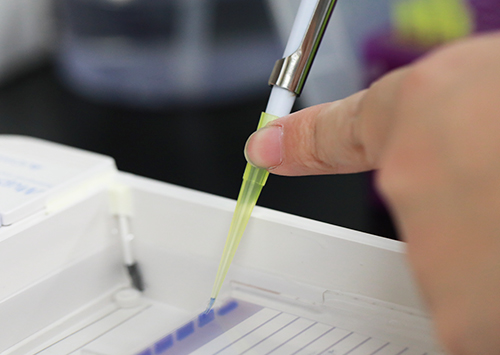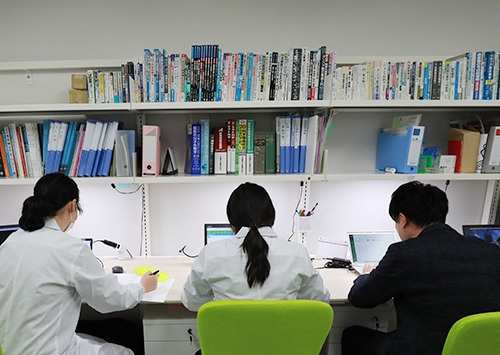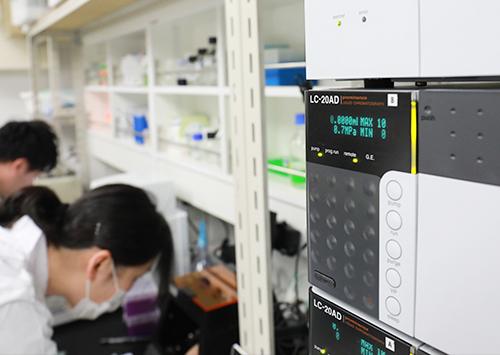本研究室では、膜輸送の分子機構の解明を目指して研究活動を行っています。膜輸送タンパク質は生命活動に必須なエネルギーの生産や、シグナル伝達、細胞外からの物質の取り込みや排出など、生命活動にとって重要な役割を担っていますが、まだ未解明の部分が多く残されています。細菌の抗生物質耐性機構の一つは薬剤の細胞外への排出であることから、微生物膜輸送は医学・創薬分野からも大きな関心が寄せられています。我々は独自に開発した世界トップクラスの性能を有する「電気生理学的解析システム」を用い、膜輸送タンパク質の機能解析を行っています。さらに、「富岳」などのスーパーコンピューターの活用により、実在膜に近い膜モデルを独自に構築して分子動力学シミュレーションによる膜輸送タンパク質の解析を行なっています。これらの従来とは異なる手法を駆使することで、我々は本研究分野において世界をリードするとともに、得られた知見を活用して社会に貢献することを目指しています。
本研究室では随時研究室見学を受け付けています。ご興味のある方は川崎までお尋ねください。
Our research focuses on understanding the molecular mechanism of membrane transport.
Membrane transport processes, including intracellular uptake, extracellular transport, signal transduction, energy production by respiration and photosynthesis, and environmental stress responses, are all essential to cellular life.
Therefore, we believe that studies on membrane transport not only contribute to basic science but also significantly lead to the development of a sustainable society by improving the functionality of microbial cell factories and the production efficiency of renewable resources.
Since one of the antibiotic resistance mechanisms of bacteria is the extracellular excretion of drugs, membrane transport of microorganisms is also of great interest in the fields of medicine and drug discovery.
In our laboratory, we use a unique “electrophysiological analysis system,” which we developed independently to study membrane transport. We also study membrane transport by molecular dynamics simulations using supercomputers such as “Fugaku”, which uses a membrane model close to an actual membrane created using our independently-developed lipid force field parameters. By making full use of these non-traditional methods, we aim to gain new insights into membrane transport.
Furthermore, based on the new findings obtained in this way, we also promote research aimed at contributing to society in various ways.



